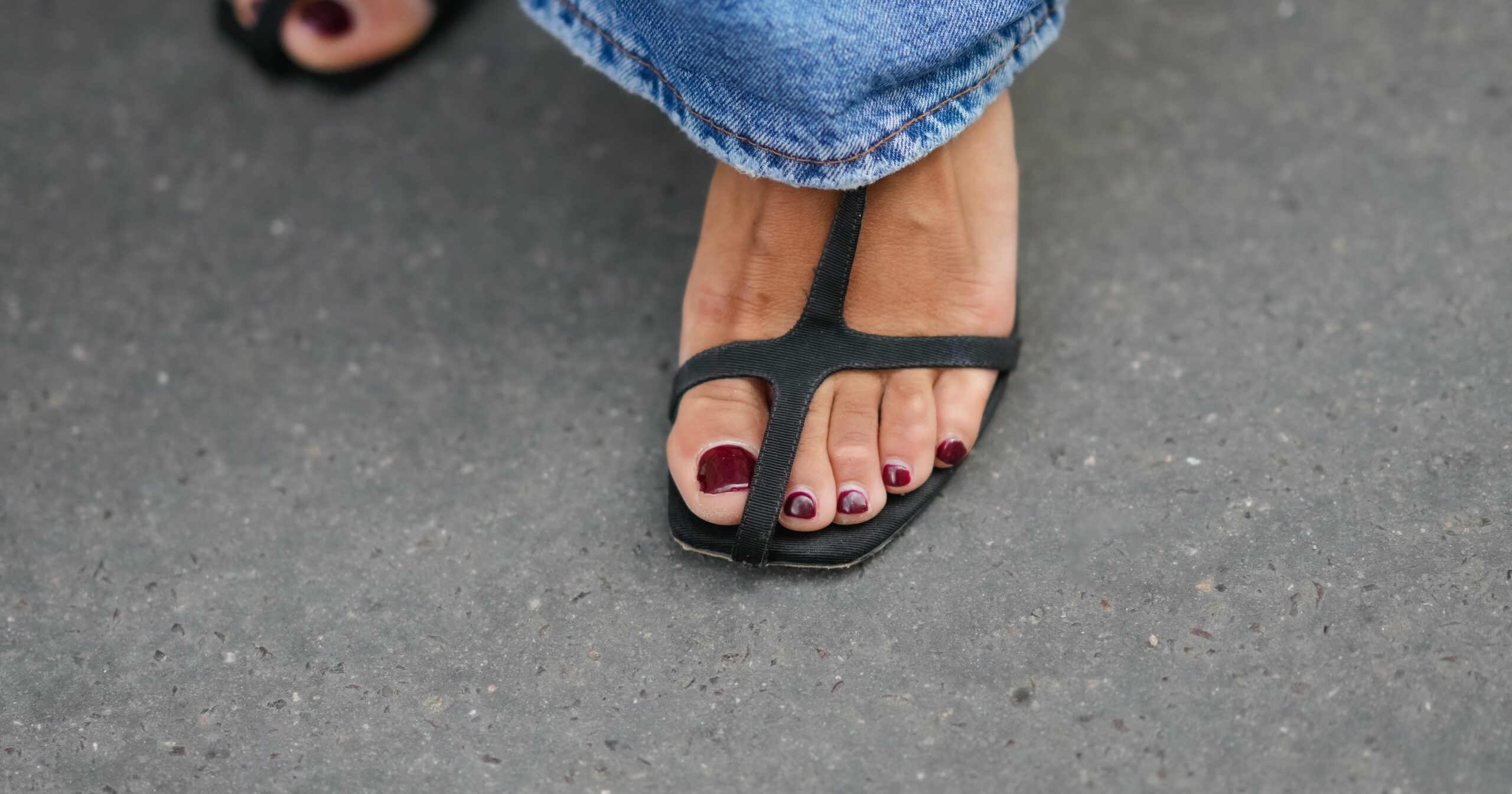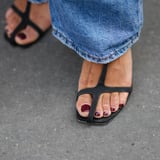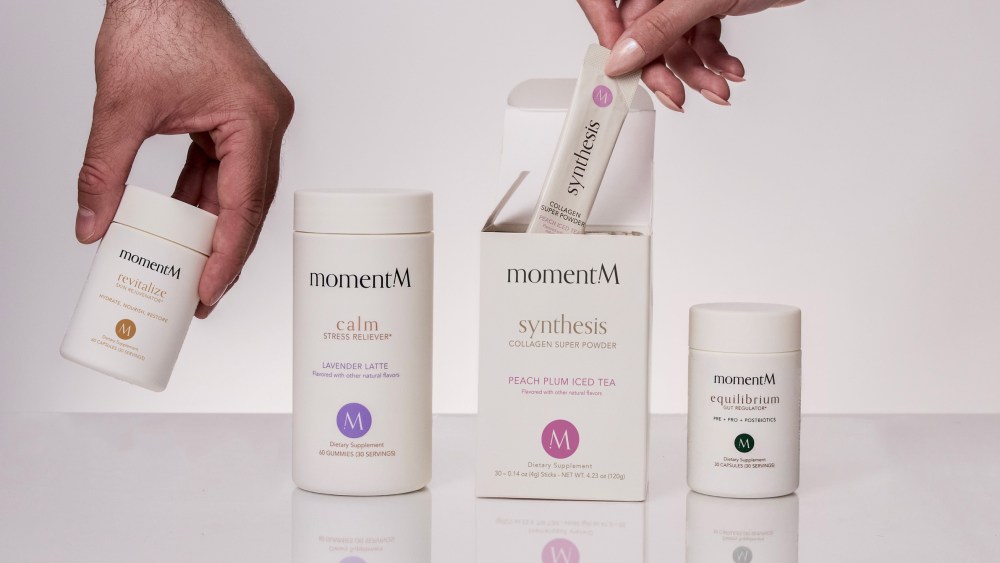Image Source: Getty/Edward Berthelot / Contributor
With the unofficial start to summer merely a few days away, the time is now to address any and every concern you may have when it comes to your feet. You want to get them in tip-top shape for the season, and while this may mean more frequent visits to the nail salon than usual for your pedicures, you may also have another concern: calluses.
“Calluses are thickened areas of skin that appear waxy and yellow,” dermatologist Hysem Eldik, tells PS. “While they can occur in other places, they can most commonly be seen on the feet.” Calluses occur quite frequently and have a few common causes.
“There are a number of situations that can form calluses,” Dr. Eldik says. “Things like repetitive rubbing and friction from ill-fitted shoes, exercise, picking, scratching, for example.” If you have any sort of foot deformity, that may also be a factor. “Foot deformities can cause an abnormal amount of pressure on a weight-bearing area to be applied. This can, in turn, increase the friction on that area and cause calluses.”
Experts Featured in THis Article
Hysem Eldik, MD, is a dermatologist based in New York City.
How to Identify Calluses
So how exactly do you go about treating calluses? The first step is to properly identify them. Alongside their yellow, waxy appearance, check for how the area feels. “Calluses are hard and sometimes hurt,” Dr. Eldik says. “It’s not uncommon for them to actually get pretty painful.”
After you’ve identified what you think maybe a callus, the next step is to go to the doctor. “It is always recommended to get diagnosed by a board-certified dermatologist or podiatrist,” Dr. Eldik says. “There are many other conditions that mimic the look of calluses, such as warts and corns. The treatment for those conditions is much different, so it is important to be diagnosed by a professional before starting a treatment plan.”
Products to Treat Calluses
Other than going to a doctor (who can pare down the callus or scrape it thinner), there are a few key ingredients that you can look out for when shopping for products to treat a callus. “Acids like trichloroacetic acid, salicylic acid, and my personal favorite, urea, can be used to soften and thin the thickened area,” Dr. Eldik says. Creams like the PurSources Urea 40% Foot Cream ($17) and Urea Cream 40% Plus Salicylic Acid ($16) feature the hero ingredient, and the latter even has salicylic acid, a combination that Dr. Eldik says could work to significantly soften calluses. “You can apply [the creams] to the callus itself or the whole foot.”
Additionally, you should regularly make sure your shoes fit properly, as well as try orthotic insoles. Now that you know exactly how to treat tough calluses, there’s no reason to be nervous about sandal season. Keep these tips in mind, and you’ll be confidently wearing those strappy sandals in no time.
Ariel Baker is the associate editor for PS Beauty. Her areas of expertise include celebrity news, beauty trends, and product reviews. She has additional bylines with Essence and Forbes Vetted.




